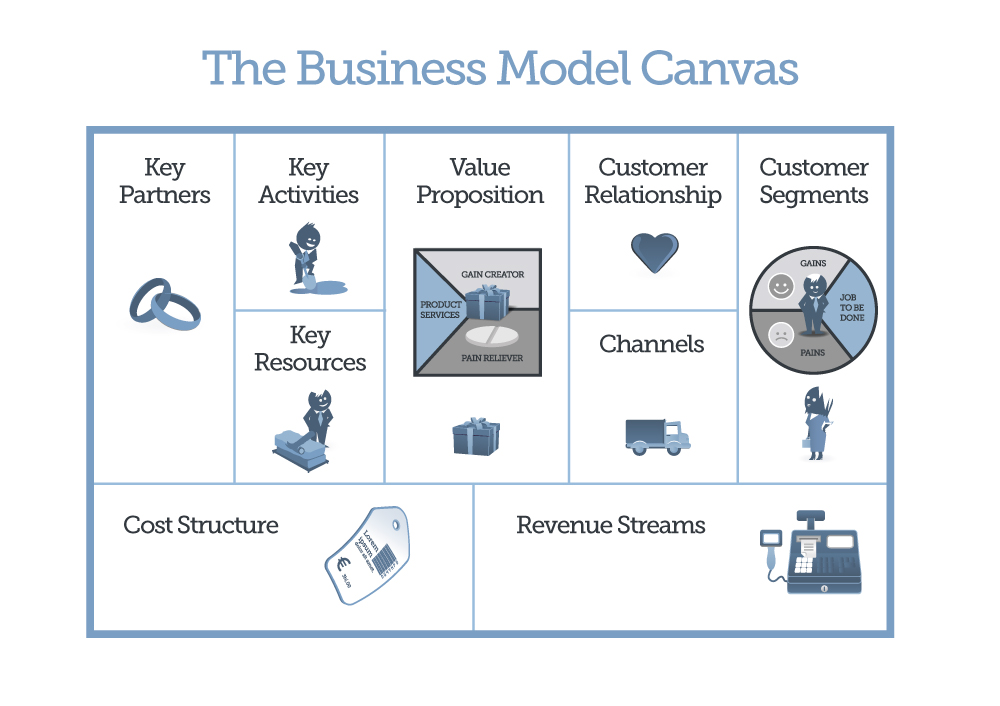Social Selling Without Situational and Contextual Content Is like Partying with Robots – Part 2
 This series of posts is about the relationship between marketing/sales communication and revenue generation. It is inspired by the sales messages that I receive regularly pushing products and services notoriously without any insight into or interest for my business or my current situation. Receiving such messages and calls is like being at a party with robots. They look human, but they are unable to ask situational questions, listen, analyze or provide a contextual response, so all they do is replay programmed propaganda messages irrespective of what you ask or tell them. It is a party with a lot of noise, but it is awfully boring and never leaves lasting impressions.
This series of posts is about the relationship between marketing/sales communication and revenue generation. It is inspired by the sales messages that I receive regularly pushing products and services notoriously without any insight into or interest for my business or my current situation. Receiving such messages and calls is like being at a party with robots. They look human, but they are unable to ask situational questions, listen, analyze or provide a contextual response, so all they do is replay programmed propaganda messages irrespective of what you ask or tell them. It is a party with a lot of noise, but it is awfully boring and never leaves lasting impressions.
Click here to read part 1
The challenge
Let’s assume that your customers stay with you for an average of 5 years and let’s say that the average sales cycle for your product/service is six months. If you take a global view of your potential market, then how many of your potential customers will be in the market for what you have to offer within the next six months?
When you get in touch with 1,000 potential customers then only 100 will be in buying mode just now and most of them will already have a fairly good idea of which vendors they will consider. Let’s assume that 85%[1] will prefer to buy from someone they already know and that they don’t know you. That leaves you with 15 leads out of every 1,000 contacts.
Let’s assume that 50% of the leads you identify will actually make a purchasing decision.
You are now left with 7.5 potential deals per 1,000 successful contacts.
How many people do you have to contact and how many contact attempts are required to actually have just one meaningful conversation with someone involved in buying a product or service like yours?
When you do get through and find someone who is prepared to talk to you and consider you as a vendor, then how do you orchestrate the conversation?
And when you get to the time for the final decision then how many of the potential deals will go your way?
We are all buyers and we are all on a number of buying journeys all the time, but we never buy everything all the time. When the time comes to buy something most of us prefer to buy from someone we already know and trust. These are the main reasons why a revenue generation approach based solely on sales people getting in touch with potential customers when they are in buying mode and then serving them standard propaganda messages will always fail.
If you sell something inexpensive and unimportant to the customers, then the approach is too expensive and if you sell stuff with a high price tag that is really important to the customer then you will always be too late.
The buyers’ journey
The famous Danish philosopher Søren Kierkegaard once said:
“…. if real success is to attend the effort to bring a man to a definite position, one must first of all take pains to find him where he is and begin there.[2] “
Selling mission critical information technology solutions to companies is never a hit and run type of business. It is the art of helping people and their companies increase productivity and/or take advantage of new business opportunities.
Then how do you use the various types of content and channels to generate as much revenue as possible? When do you use which type of content and what happens when you get it wrong?
You cannot answer these questions without a thorough understanding of your customers’ buying journey including the various personas involved in the purchase decision.
From my own world
Let me give you some examples from my own world.
 There is a huge difference between making a decision to buy my latest book (€13.56), signing up for one of my workshops (€950 plus travel and accommodation), asking me to deliver a keynote (€4,500 and up) and engaging me as a business advisor (€2,150 and up).
There is a huge difference between making a decision to buy my latest book (€13.56), signing up for one of my workshops (€950 plus travel and accommodation), asking me to deliver a keynote (€4,500 and up) and engaging me as a business advisor (€2,150 and up).
Buying one of my books is a “simple purchase” meaning that it can be made by any single individual irrespective of her position in the organization and it doesn’t require any major budget considerations.
Signing up for my workshops and engaging me for a keynote or as a business advisor are mostly[3] “complex purchases” meaning that more than one individual needs to agree and that there must be budget coverage for the purchase.
The workshop is a well-defined service that is easy to understand, but how to translate the outcome of the workshop into value for the attendees is a very individual consideration. Each individual will have to consider that for herself and the price tag of the workshop doesn’t allow me to engage in situational sales activities.
Engaging me as a keynote speaker with one of my current presentations is easy, but having me deliver a customized keynote requires more work on the customer’s behalf and subsequently for me too.
Engaging me as a business advisor is a highly individual endeavor. Predicting exactly what the client will get out of having me (or any other business advisor) working with them is impossible unless we spend time defining the objectives and agreeing on how to measure progress.
 The buyer’s journey for each of my “products” is completely different and thus the communication vehicles that I need in place to engage with my target audience and move them ahead in my pipeline are very different too.
The buyer’s journey for each of my “products” is completely different and thus the communication vehicles that I need in place to engage with my target audience and move them ahead in my pipeline are very different too.
You can get to my “products” in many different ways and only one (the product page on our web site) is propaganda. The other routes are through need/pain content and contextual content mainly on social media. Only very rarely do I produce situational content and when I do there must be a very high probability that it will pay off for me as well as for my client.
I am not saying this is the best way for everybody, but it works very well with the type of “products” that my target audience buys from me.
The value proposition and target audience
Designing scalable revenue generation models, which I assume any business owner and executive ultimately wants, requires that you stop hammering out propaganda on all channels. You need to get back to the drawing board and consider a few basic concepts of which the most important is the relationship between your customer value proposition and your target audience[4].
 The objective of this exercise is to identify the segments in the market where your value proposition is extremely attractive and competitive, deeply understand the value you provide and the switching pain that your potential customers have to go through to acquire a solution based on your products and services.
The objective of this exercise is to identify the segments in the market where your value proposition is extremely attractive and competitive, deeply understand the value you provide and the switching pain that your potential customers have to go through to acquire a solution based on your products and services.
When you have done that then you identify which persons will typically be involved in a project where you could become the vendor and you then map the issues they will be concerned about.
 And finally you draw a map of the journey each person travels over the life cycle of your type of solution and identify the potential touch points where you can engage in a way that is relevant to the other party.
And finally you draw a map of the journey each person travels over the life cycle of your type of solution and identify the potential touch points where you can engage in a way that is relevant to the other party.
Now you have the blue print for designing your communication strategy, developing the vehicles and deciding how to use them to engage with your target audience.
Read part 3
Download this series of posts as a whitepaper.
–ooOoo–
[1] The 15% corresponds to the early market portion of the total market as defined in the law of diffusion of innovation: Moore, Geoffrey A. 2014. Crossing the Chasm: Marketing and Selling Disruptive Products to Mainstream Customers (Harper Business, an imprint of HarperCollins Publishers: New York, NY).
[2] Søren Kierkegaard, The Journals, 1854
[3] Executives and managers with their own budgets make the decision to attend themselves while people without a budget need approval from their manager.
[4] The analysis and definition of value proposition and the target customer segments is an integrated part of the business model framework. My experience is that these two building blocks are the most difficult to nail, but also by far the most important to get right. See Osterwalder, Alexander, Yves Pigneur, and Tim Clark. 2010. Business model generation: A handbook for visionaries, game changers, and challengers. (Wiley: Hoboken, NJ). and Osterwalder, Alexander, Yves Pigneur, Gregory Bernarda, and Alan Smith. 2014. Value proposition design: How to create products and services customers want. (Wiley: Hoboken, NJ).









